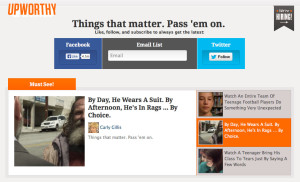
Evan Ratliff, a freelance writer for Wired, co-founded the Atavist, a publishing outlet for digital books laced with media and formatted for e-readers and apps.
Evan Ratliff, co-founder, the Atavist. Credit: Lisa Helfert.
After launching the Atavist as an iPad app for longform stories in 2009, Ratliff and his fellow founders, Wired senior editor Nick Thompson and web design and programming guru Jefferson Robb, started licensing their interactive story-building software called Creatavist as a platform to other authors and publishers.
In a phone interview with American Journalism Review, Ratliff talked about trends he’s seeing in storytelling as people continue to use the Creativist platform.
What follows is a condensed transcript of that conversation.
Q: In your opinion, are interactive stories and digital storytelling the future of longform? Why? What about simple print stories?
A: I don’t think there is a “future of longform.” There are countless ways to tell stories, or convey news and information. Multimedia stories are most certainly becoming a greater part of that landscape. But it’s not some kind of battle between “multimedia” and “print” or “text.” Remember that a magazine story in a print issue is generally “multimedia.” It’s designed with photos that are meant to help the reader understand or enjoy the piece. Books even often come with maps or photos at the beginning or in the middle of the text.
The fact is we live in an age where we can now think even further down the line, on digital devices, to incorporate video, audio, images, interactive elements all into a text. It doesn’t mean print stories are going away. It doesn’t mean text stories are the past. It just means there are lots of ways to tell a story. We actually view the story as the fundamental unit we are selling to readers, and there are many different ways (multimedia, audio-only, text-only) for them to consume that story.
Q: What can you tell me about the innovation in the design of different Creatavist stories? Is there much variation?
A: It’s still really early. But there’s an incredibly wide array from someone doing a simple text-based book, to another person doing a photo book that is primarily visual, to a small publisher creating a music magazine, to WBUR in Boston creating a full immersive story experience around the Whitey Bulger trial. The system is extremely open, you can do everything from tell one story to make your own iPhone and iPad app. People are just now starting to build on top of it, but there aren’t many limits to what they can do.
Q: How do the photo books differ from the text-based books, and then how do those differ from creating an app when it comes to the cost, time commitment and effort it takes to create each of those types of pieces?
A: Well, the effort can obviously vary tremendously. It’s not a set thing. The amount of time it takes to produce any creative project depends on how much you want to put into it. Ditto your own costs. It’s way more expensive to produce a photo book about Nigerian oil fields than one about your kids.
As far as the system is concerned, we’re trying to make all of those things equally easy to produce from a design and technology perspective. The cost depends on how much you do — one story for free, unlimited stories on Creatavist for $10/month, and your own app/Web store for $250/month.
Q: Because longform reporting combined with the multimedia that people are creating to go with these stories tends to cost more than basic articles, what would you say is the market for these stories?
A: We’re really still in the infancy of this sort of thing, so I don’t think there’s really some set “market” for it. The same people who love reading The New Yorker may love reading the multimedia versions of our stories, they may not. We do find that younger readers tend to really appreciate the interactive aspect of our pieces, which is a promising sign for the future. But it’s early enough that we certainly still have to make the case that our pieces are worth checking out.







